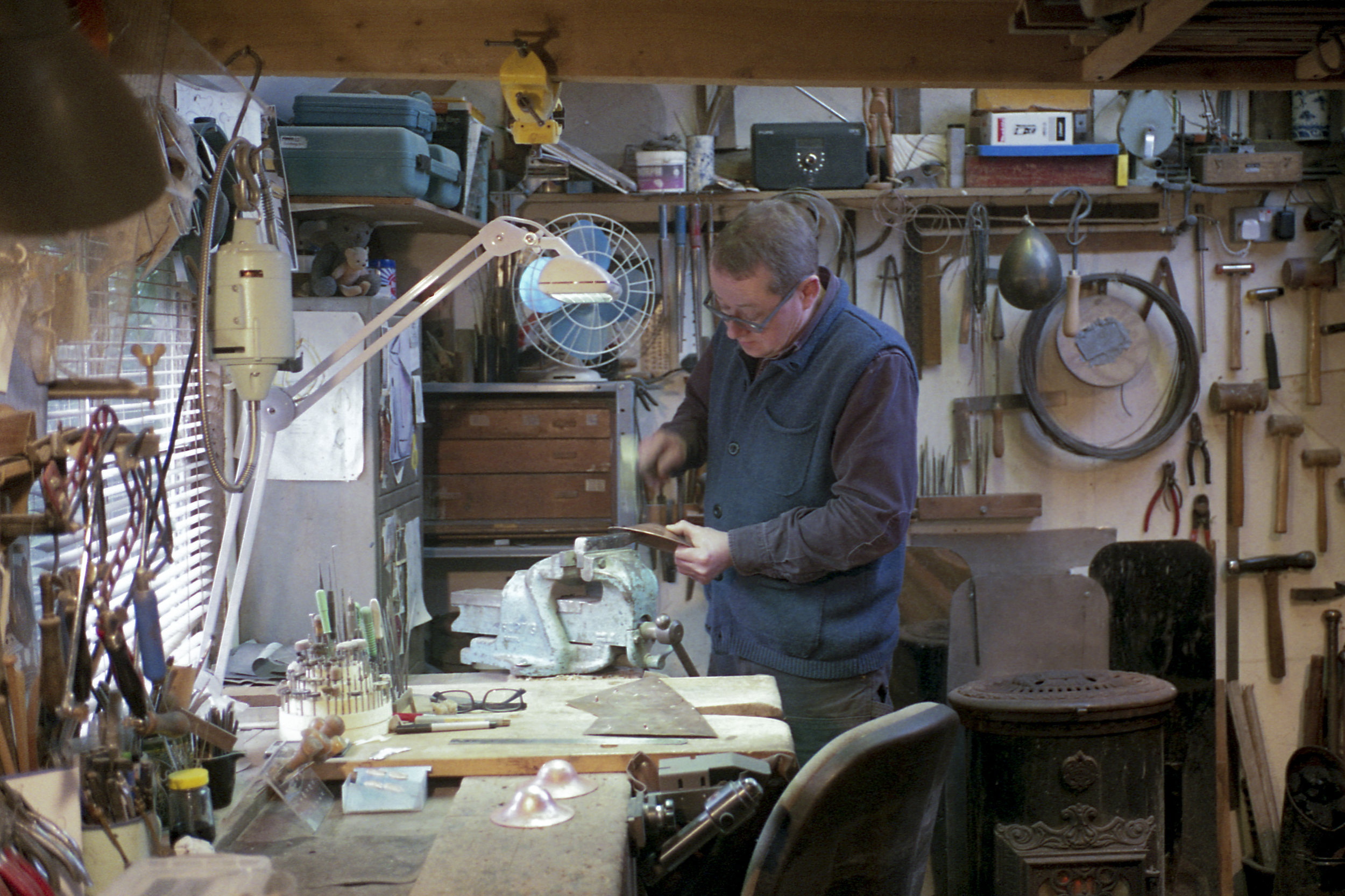

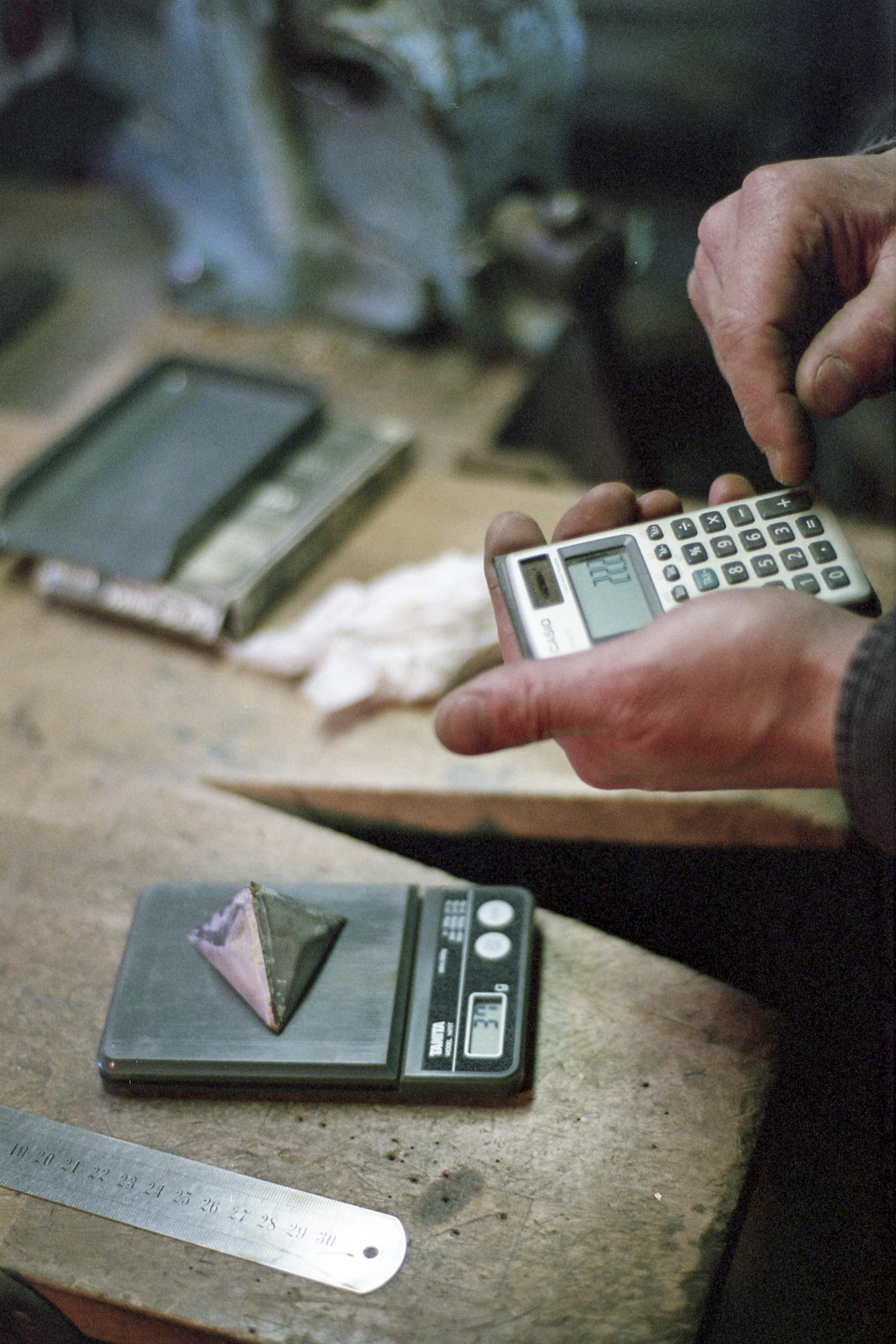


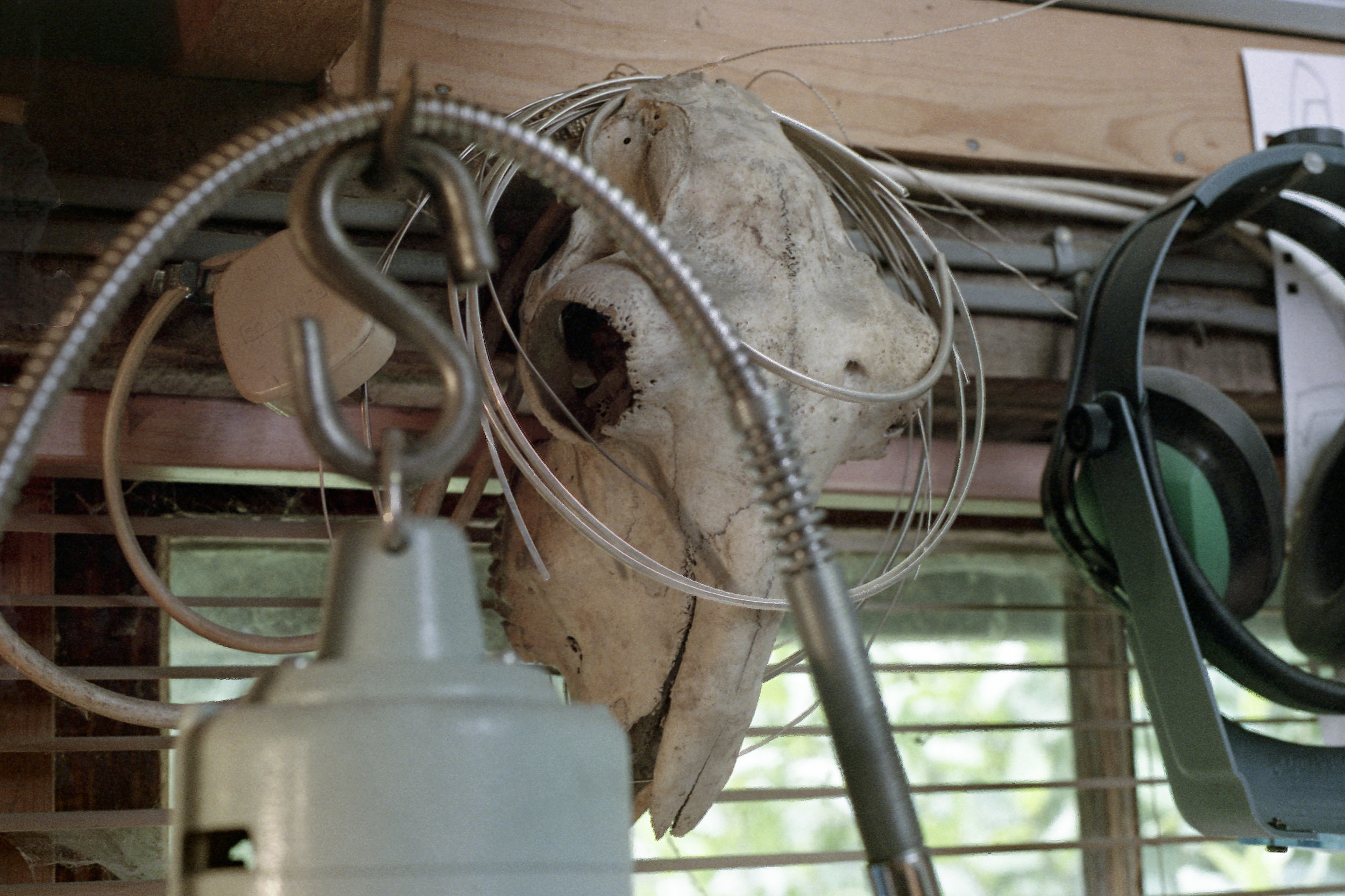

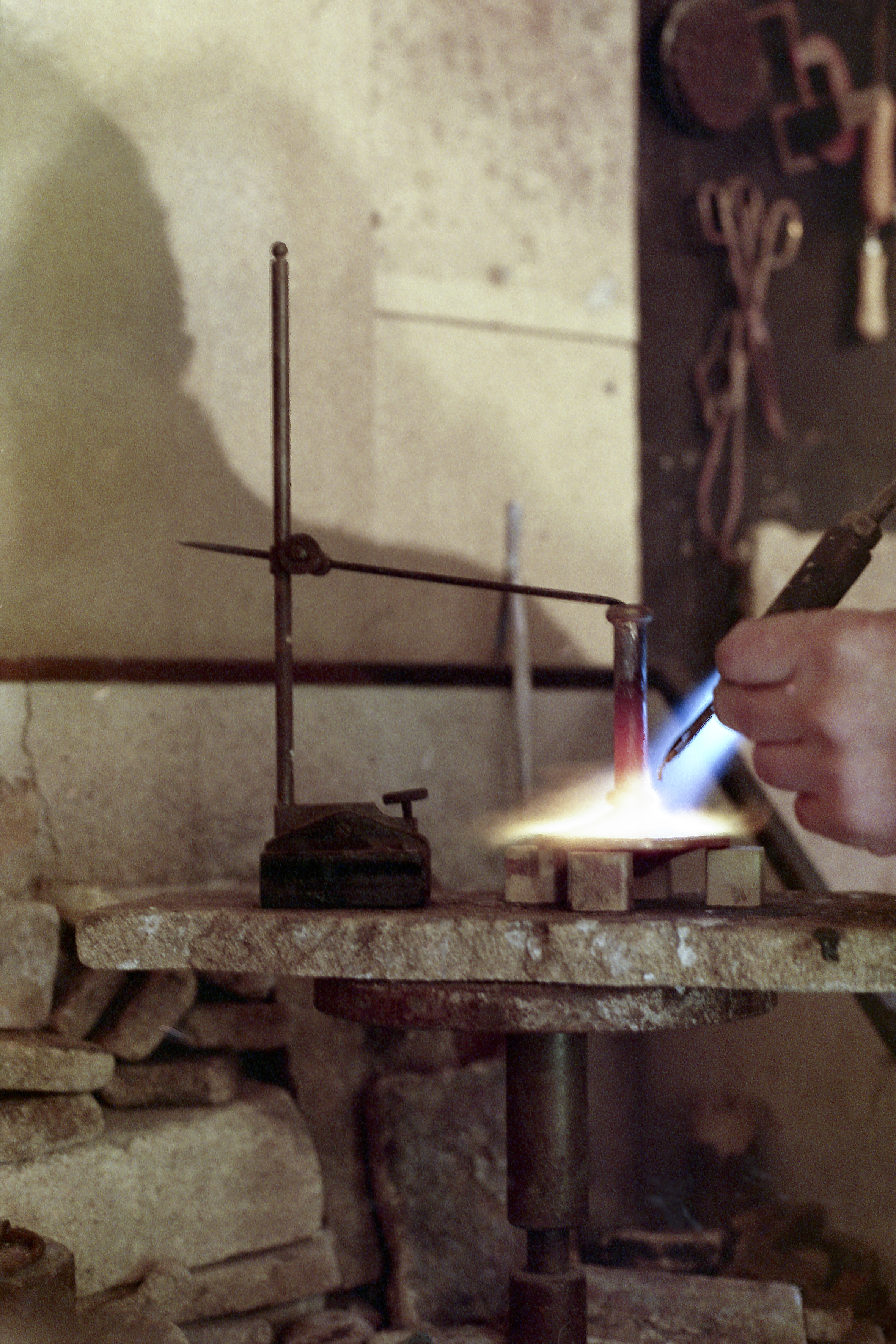


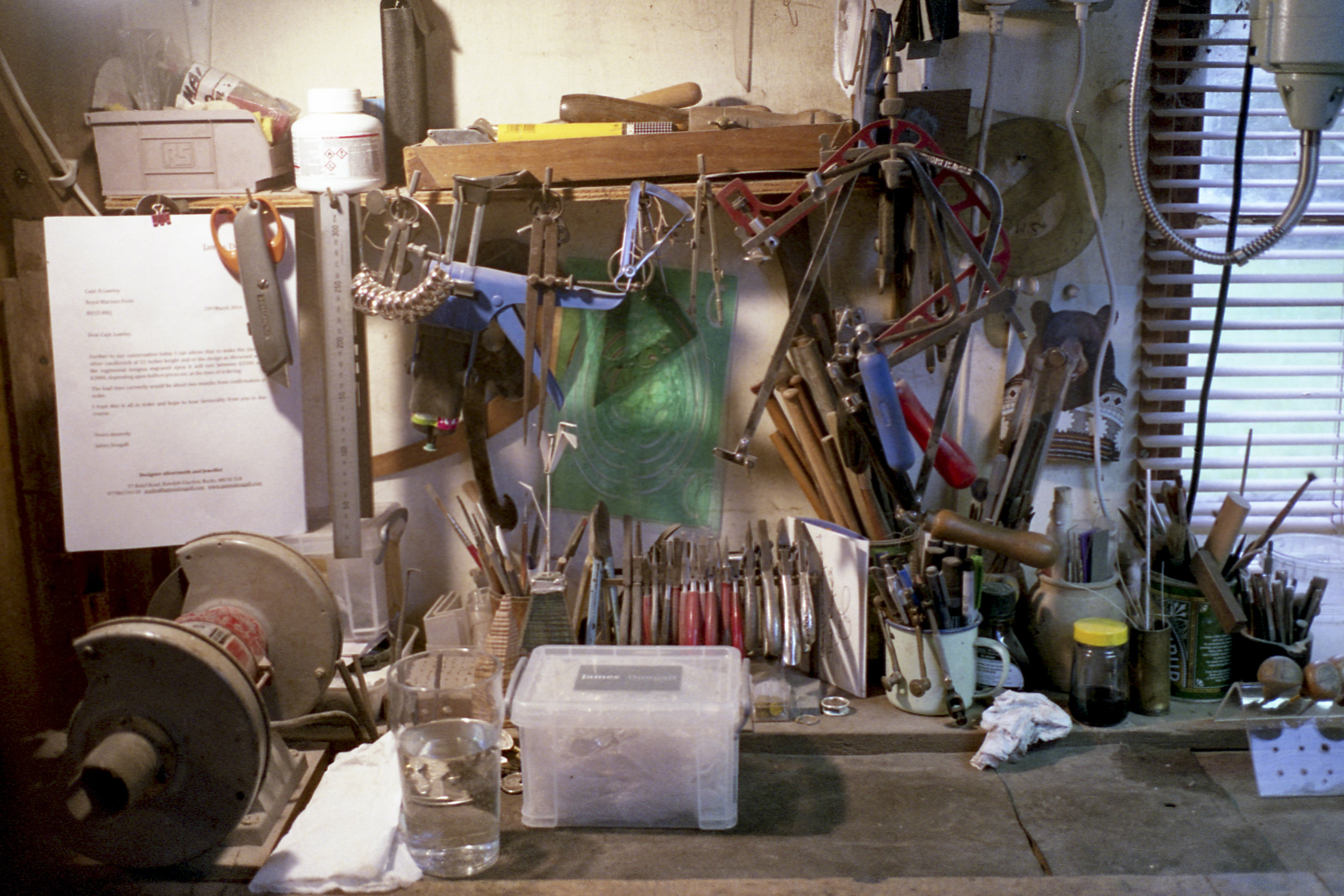









Your Custom Text Here
#3 The Silversmith
James Dougall, once an Antiques dealer, now silversmith has fast become a recognisable name within the silver trade, with works included in both public and private notable collections; and exhibited nationally.
Working commercially as a smith of any description, Dougall has recognised the need to be adaptable to sustain a living. Although Silver is his primary material he has a strong understanding of other similar materials, working with gold when commissions dictate and often practicing with cheaper materials that work with similar properties: copper.
Copper is a material that heats very like silver and can be manipulated using similar techniques, but without the high costs. For each item excluding jewellery, a copper test will be undertaken, sometimes in completion, sometimes until the design is clearly practical; before initiating using silver and gold. A lot of these lay abandoned on shelves of the workshop to be looked at for reference in the future.
Many of the techniques still used today by silversmith’s, date back within Britain to the Middle Ages, and are also evidenced in documents from elsewhere; including the studies by John Lockwood Kipling’s of traditional Indian crafts in 1865.
This study is part of The British Heritage Project, and aims to celebrate traditional crafts and craftsman within Britain.
#3 The Silversmith
James Dougall, once an Antiques dealer, now silversmith has fast become a recognisable name within the silver trade, with works included in both public and private notable collections; and exhibited nationally.
Working commercially as a smith of any description, Dougall has recognised the need to be adaptable to sustain a living. Although Silver is his primary material he has a strong understanding of other similar materials, working with gold when commissions dictate and often practicing with cheaper materials that work with similar properties: copper.
Copper is a material that heats very like silver and can be manipulated using similar techniques, but without the high costs. For each item excluding jewellery, a copper test will be undertaken, sometimes in completion, sometimes until the design is clearly practical; before initiating using silver and gold. A lot of these lay abandoned on shelves of the workshop to be looked at for reference in the future.
Many of the techniques still used today by silversmith’s, date back within Britain to the Middle Ages, and are also evidenced in documents from elsewhere; including the studies by John Lockwood Kipling’s of traditional Indian crafts in 1865.
This study is part of The British Heritage Project, and aims to celebrate traditional crafts and craftsman within Britain.
©Tom Warland 2025